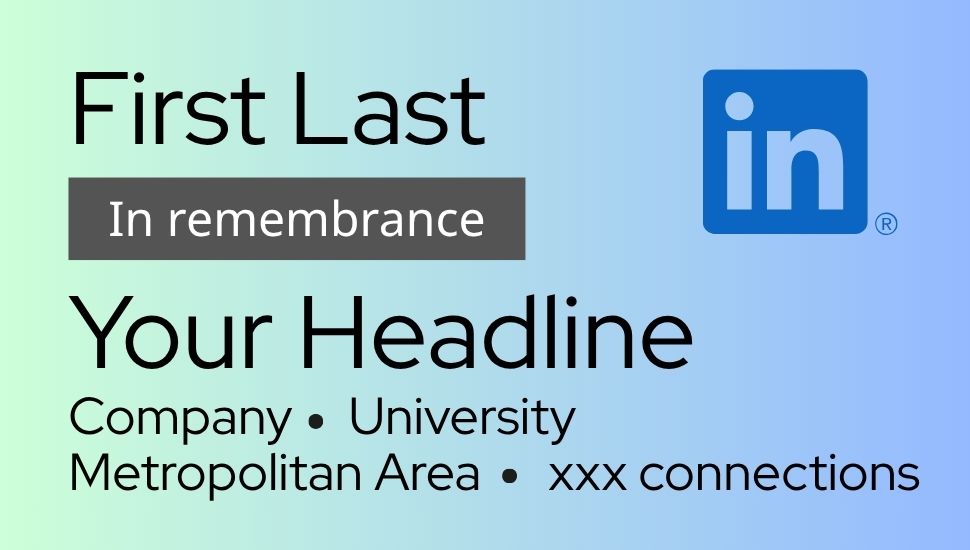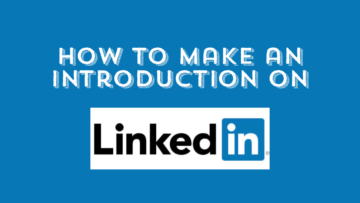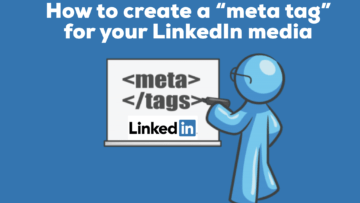Most people rarely consider what happens to their digital presence after they pass away. In a time when much of our lives – personal, professional, and memories – live online, you should consider: Who will control your profiles, and how will they be managed when you are deceased?
LinkedIn: Your Professional Legacy
LinkedIn provides two primary paths for what happens to a “deceased member”:
- Memorialize: If someone reports you are deceased with proof, LinkedIn can mark your profile as “in remembrance” and memorialized.
- Close the account: An authorized representative, such as your executor or attorney, can request the permanent removal of your profile.
Once an account is memorialized or closed, no one can log in. Connections may still view existing content, depending on your settings, but updates will no longer occur.
LinkedIn does not remove accounts for inactivity. If your death is not reported, your profile may remain online, leading to awkward reminders.
If a relative tries to close your LinkedIn account without proper authorization, their only option is to report that you are deceased, and not delete it. Understanding policies like these across platforms is key to planning your digital legacy.
Facebook & Instagram (Meta’s Policies)
Meta owns Facebook and Instagram, so their policies for deceased accounts are similar.
- You can select a Legacy Contact on Facebook to manage your memorialized account.
- If notified of a user’s death, Facebook may memorialize the account.
- The Legacy Contact or verified family member can pin a post, update profile or cover photos, moderate tribute posts, and request account removal. They cannot log in as the deceased or read private messages, as stated by Trust & Will.
- Without a Legacy Contact, a verified close relative may request account deletion.
- After a user’s death, you can request Instagram to memorialize their account, which then displays the label “Remembering.”
- No one (including the legacy contact) can log in.
- A memorialized Instagram account keeps all posts, photos, and videos, visible to the original audience.
- In some cases, an immediate family member can request the full removal of the account instead of memorialization.
Twitter / X & Other Platforms
- On X (formerly Twitter), an immediate family member or personal representative can request deactivation by providing the user’s details, proof that they are deceased, and their own identification.
- Some platforms, such as Google, have inactive account managers that allow you to pre-plan actions if your account goes idle, according to Wikipedia.
- For lesser-known or niche platforms, results differ. Some keep accounts dormant; others delete or archive them. Their internal policies and specific requests determine what happens.
Why This Matters (Especially for Professionals)
- Brand consistency: Your professional profile is your digital business card. If it stays unmanaged, it can misrepresent you.
- Respect privacy and dignity: Your posts and content are deeply personal. Planning allows you to protect them as you see fit.
- Ease the burden on loved ones: Without clear instructions, families face confusing steps to manage or delete your account.
- Digital estate planning is real estate planning: In many states, your digital assets are considered part of your estate. Include instructions about your social media in your will or legal documents.
What You Can Do Now
- On LinkedIn, decide whether you want your account closed or memorialized. Write down your preference.
- On Facebook, assign a Legacy Contact by clicking your profile picture, select Settings & Privacy > Settings > Accounts Centre > Personal details > Account ownership and control > Memorialization, then choose your account.
- On Instagram and similar platforms, write your wishes somewhere secure, such as in your estate plan.
- In your will or digital estate plan, include login instructions, your preferences, and contact details for trusted people
- Tell your wishes to close friends or family so they know what actions to take when you are deceased.
Bottom Line
Social media accounts don’t vanish automatically (unless someone intentionally deletes them). They can outlive us, even when we are deceased. Having clarity and a plan in place ensures that your digital legacy is handled thoughtfully, both for your professional image and for the people you leave behind.
NEXT STEPS
- Subscribe to my newsletter on LinkedIn™ for bright ideas on how to manage your career.
- Subscribe to the Great Careers Network Substack
- If you need a resume or LinkedIn™ profile to get you to your next step, book a call to chat! Contact me for corporate training, too.
- Join as a member at https://greatcareers.org/membership
- Sponsor a job seeker and get an immediate tax-deductible receipt.
- Follow #GreatCareersPHL
BIO
Lynne M. Williams is the Executive Director of the Great Careers Network, a volunteer-run 501(c)3 nonprofit organization that provides career development and networking connections for 1) job seekers in career transition, including veterans, and 2) employed and self-employed for career management.
Aside from writing keyword-focused content for ATS resumes and LinkedIn profiles, Lynne is writing her doctoral dissertation on LinkedIn for Job Seekers. She is a contributing author on “Applying to Positions” in Find Your Fit: A Practical Guide to Landing the Job You Love, along with the late Dick Bolles, the author of What Color is Your Parachute?, and is also a speaker on career topics.




